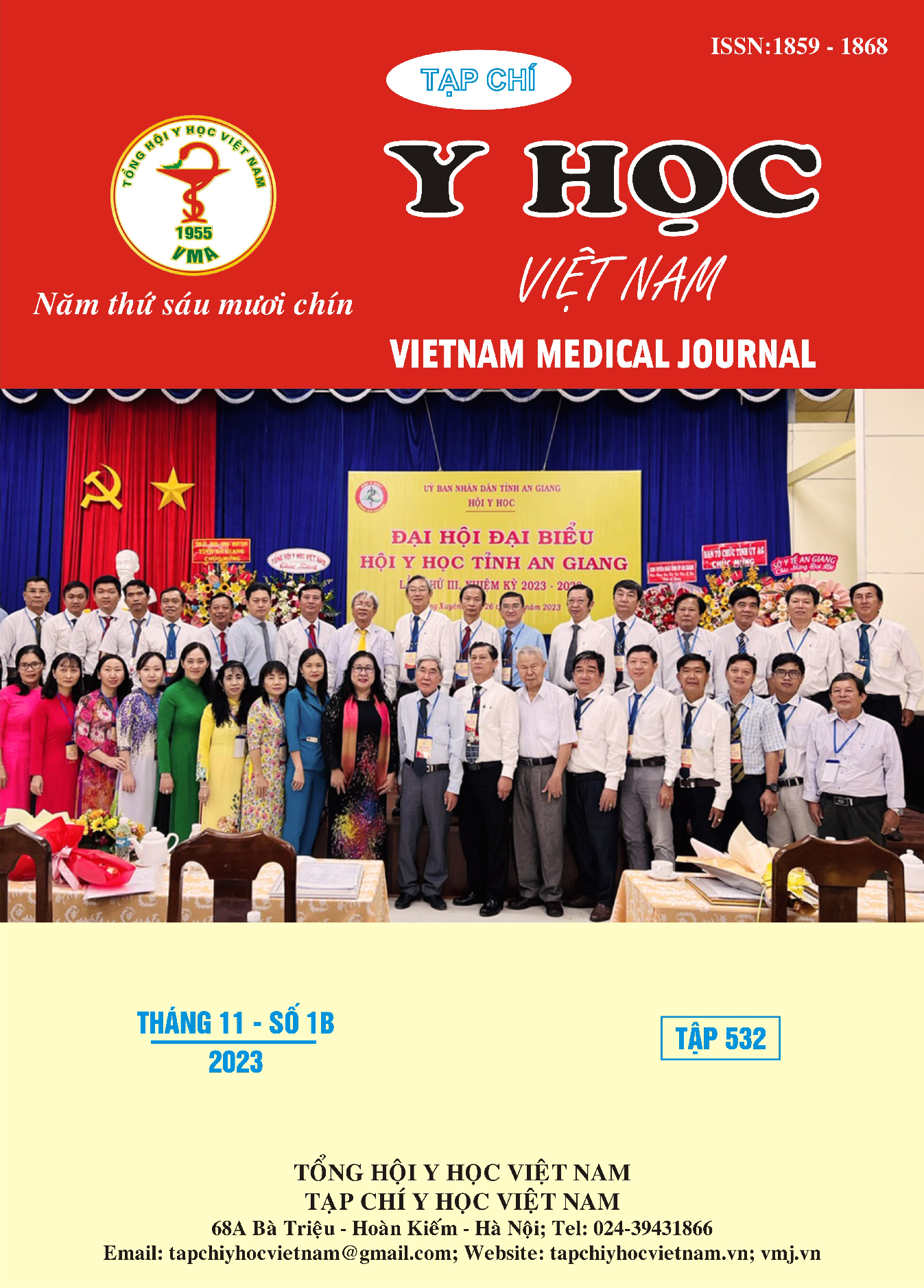COMPARATIVE ANALYSIS OF COMPUTED TOMOGRAPHY SCANS AND ANATOMICAL FINDINGS OF DONOR KIDNEYS IN LAPAROSCOPIC KIDNEY TRANSPLANTATION
Main Article Content
Abstract
the results of computed tomography (CT) scans with the anatomical findings of harvested kidneys in laparoscopic kidney transplantation. Subjects and Research Method: This descriptive cross-sectional study included 166 living kidney donors who underwent both CT scans (256 slices) and laparoscopic surgery at Viet Duc Hospital from June 2021 to June 2022. Results: The CT scans revealed the following findings regarding renal arteries: 142 out of 166 cases (85.64%) showed one renal artery on the graft side; 23 cases (13.86%) had two renal arteries on the graft side; and 1 case (0.6%) had three renal arteries on the graft side. In three cases, a single renal artery bifurcated into two arteries due to an incision at the common arterial trunk (2 on the right and 1 on the left). Three cases showed three veins on the donor kidney, whereas the CT scans displayed only two veins. Two cases were identified during the surgery as having two arteries and one vein, with an additional vein found. The average length and diameter of the kidney with one vein were 2.43±0.55 cm and 15.12±3.74 mm,the length and diameter of the left kidney with one vein were 3.63±0.67 cm and 14.27±2.98 mm. Conclusion: The 256-slice CT scans are highly valuable for evaluating anatomical variations and abnormalities in renal arteries and veins outside the kidney in living kidney donors. A thorough understanding of renal vascular anatomy prior to transplantation and ensuring the safety of the donor after kidney harvesting play a crucial role in the overall success of kidney transplantation.
Article Details
Keywords
kidney transplantation, computed tomography, renal artery, renal vein.
References
2. Famurewa OC, Asaleye CM, Ibitoye BO, Ayoola OO, Aderibigbe AS, Badmus TA. Variations of renal vascular anatomy in a nigerian population: A computerized tomography studys. Niger J Clin Pract. 2018;21(7):840-846.
3. Đoàn Quốc Hưng, Cao Mạnh Thấu, Nguyễn Minh Tuấn (2016). Đặc điểm giải phẫu mạch máu thận ghép người cho sống tại bệnh viện hữu nghị Việt Đức. Tạp chí y – dược học quân sư, 4, 97-102
4. Ghonge NP, Gadanayak S, Rajakumari V. MDCT evaluation of potential living renal donor, prior to laparoscopic donor nephrectomy: What the transplant surgeon wants to know? Indian J Radiol Imaging. 2014;24(4):367-378. doi:10.4103/0971-3026.143899.
5. Soudaphone Soukanouvong. Nghiên Cứu Đặc Điểm Giải Phẫu Mạch Thận và Đường Bài Xuất Trên Chụp Cắt Lớp vi Tính 64 Dãy ở Những Người Cho Thận. Luận văn thạc sĩ. Đại học Y Hà Nội; 2014.
6. Hoàng Thị Vân Hoa. Vai trò của chụp cắt lớp vi tính 128 dãy trong đánh giá giải phẫu động-tĩnh mạch đoạn ngoài thận ở người cho sống. Tạp chí điện quang Việt Nam số 41. Published online 2020:11-16.
7. Đỗ Ngọc Sơn, Đoàn Quốc Hưng, Cao Mạnh Thắng (2016). Đặc điểm giải phẫu mạch máu thận ghép người cho sống tại bệnh viện Hữu nghị Việt Đức giai đoạn 2012- 2015. Tạp chí Y học Việt Nam, 445, 420–425
8. Bùi Trung Nghĩa, Nguyễn Duy Huề (2023). Nghiên cứu giá trị của cắt lớp vi tính 256 dãy trong đánh giá giải phẫu mạch máu thận đoạn ngoài thận ở người sống hiến thận. Tạp chí điện quang và y học hạt nhân Việt Nam , 51, 20-25.
9. Dư Thị Ngọc Thu (2006), Rút kinh nghiệm về kỹ thuật ghép thận tại bệnh viện Chợ Rẫy với người cho sống có quan hệ huyết thống, Luận án Chuyên khoa cấp II, Đại học Y Dược Thành phố Hồ Chí Minh.
10. Troppmann C., Wiesmann K., McVicar J.P., et al. (2001). Increased transplantation of kidneys with multiple renal arteries in the laparoscopic live donor nephrectomy era: surgical technique and surgical and nonsurgical donor and recipient outcomes. Arch Surg, 136(8), 897–907


